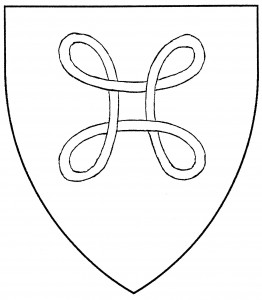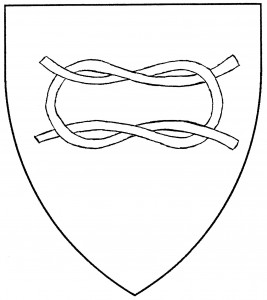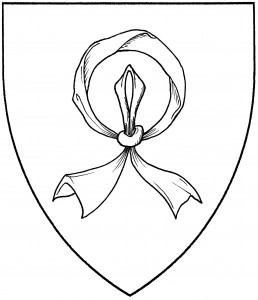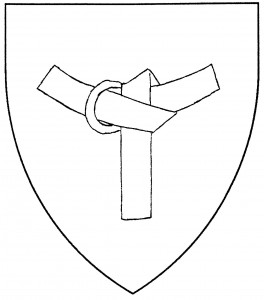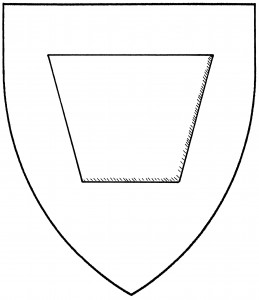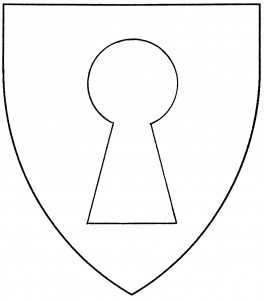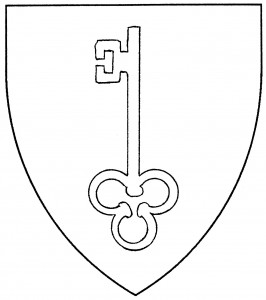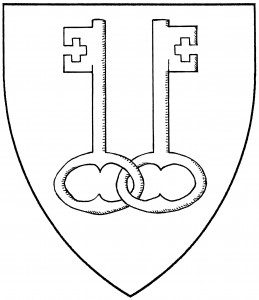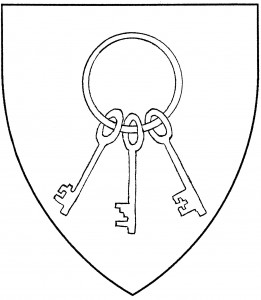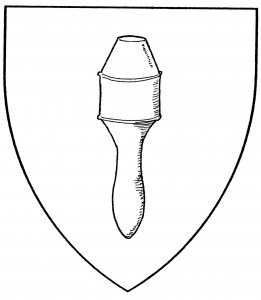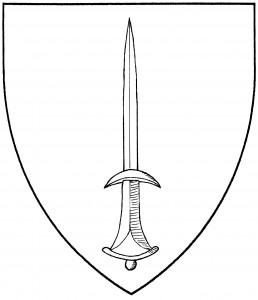
Dagger (Period)
A knife is a bladed tool or weapon, used for cutting or stabbing. The knife’s blade is proportionally shorter than that of a sword; no heraldic difference is normally counted between the two. Like the sword, the knife is palewise, point to chief, by default. Its “proper” coloration is with argent blade and Or quillons and handle; occasionally the handle may be light brown.
The most common form of knife, in both medieval and Society armory, is the “dagger”, called in French a poignard. It’s a period charge, found in the attributed arms of la Montagne c.1340 [Zurich 7; also Conz.Const. xciii, 1413].
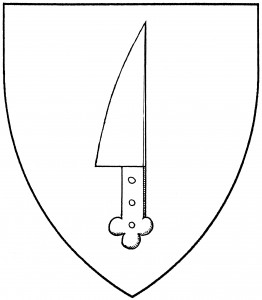
Kitchen knife (Period)
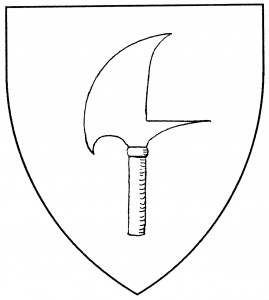
Trenket (Period)
In period armory, we also find the “kitchen knife” as in the arms of von Jaxtheim, 1605 [Siebmacher 113]; the “trenket”, a cordwainer’s or leatherworker’s knife, with a spiked moon-shaped blade, as in the arms of Benvenuti, c.1550 [BSB Cod.Icon 278:409]; knives with serrated blades, in the arms of Lepuzáin, mid-16th C. [Armeria 359]; and a broad knife with a curved blade (cortell, coltello), found in the canting arms of Cortona, mid-15th C. [Triv 122].

Calligrapher’s knife (Accepted)
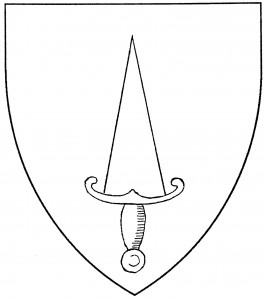
Cinquedea (Accepted)
Examples of knives found in Society heraldry include such divers items as the “calligrapher’s knife” (the illustration is taken from an illumination of Eadwine of Canterbury c.1140; Donald Jackson, The Story of Writing, p.71); and the “cinquedea”, a 15th C. Italian weapon whose blade is five fingers in width [Stone 181].
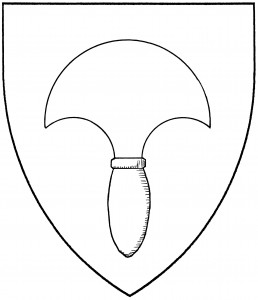
Half-moon knife (Accepted)
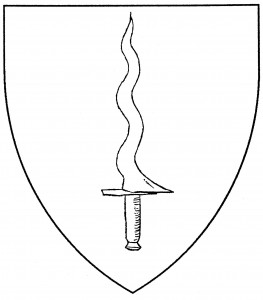
Kris (SFPP)
Other Society examples include the “half-moon knife”, a slicing tool with a crescent blade [Singer 166]; and the “kris”, a wavy bladed Malay dagger [Stone 382]. The use of the kris, as an artifact from outside Europe, is a step from period practice.
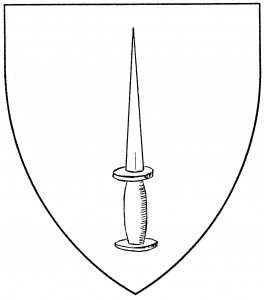
Kindjal (Disallowed)
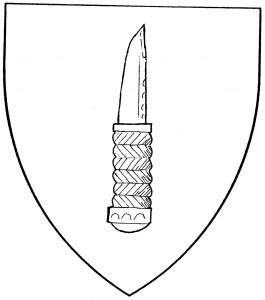
Skene (sgian dubh, modern) (Disallowed)
Two other knives have been registered but since disallowed, pending evidence of their existence in period. One is the “kindjal”, an Indian dagger with a round hilt; no further evidence has been found as of this writing. The other is the “skene” or “skean”, a short dirk favored by Scotsmen. While the modern form of skene (sgian dubh) has not been documented to period, and is therefore disallowed, a period form may be seen in the canting arms of James Skene of That Ilk, b.1544 (Lord Crawford’s Armorial, late-16th C., fo.140v). It appears indistinguishable from a dagger, and seems to be used solely for the cant.
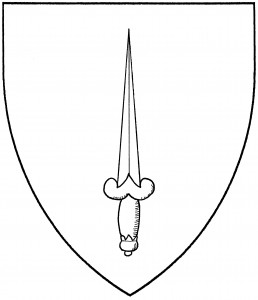
Skene (Period)
For related charges, see cleaver, drawknife, fer-a-loup, shave, sickle.
The Ansteorran Scribes and Illuminators Guild bears: Vert, a calligraphic knife and a reed pen in saltire argent, tied with a ribbon Or.
Giles William Trout bears: Per bend sinister azure and argent, two pairs of daggers in saltire counterchanged.
Gwenere of Ben Murry bears: Purpure, in bend two krisses inverted argent.
Shuaib Hassan bears: Argent chapé sable, a cinquedea gules, ornamented Or.
Umbar in Harchiral Dandachi bears: Argent, chaussé ployé cotised and in chief a kindjal dagger palewise inverted sable surmounted by a madu shield fesswise gules.
William filius Willelmi de Wyke bears: Gules, a trenket argent.
Morgan the Tanner bears: Or, on a hide sable a half-moon knife argent, hilted Or.
Cathbarr MacQuarrie bears: Argent, a sea-lion vert, on a chief invected purpure a skean reversed Or.
